Lifting Trolleys - Buyer's Guide
Date Posted:20 September 2024
Choosing the right lifting trolley can significantly enhance safety, efficiency, and productivity in your workspace.
Lifting trolleys are essential tools for safely and efficiently moving heavy or bulky items in various environments, from warehouses and manufacturing facilities to construction sites and retail stores. These trolleys assist in reducing manual lifting, which can prevent injuries and improve productivity. Choosing the right lifting trolley requires consideration of several key factors to ensure it meets your needs. This guide will help you make an informed decision.
1. Why Choose a Lifting Trolley?
Lifting trolleys offer numerous advantages that enhance workplace safety and efficiency:
- Injury Prevention: By automating the lifting process, these trolleys help reduce the risk of back and shoulder injuries associated with manual lifting.
- Efficiency: Lifting trolleys streamline the process of moving heavy items, making it quicker and easier to transport goods and materials across your workspace.
- Versatility: Available in various designs, lifting trolleys can be used for a wide range of applications, including lifting and transporting goods in warehouses, factories, and retail environments.
- Improved Safety: Many lifting trolleys are designed with safety features such as stable bases, anti-slip surfaces, and secure locking mechanisms to ensure safe operation.
2. Types of Lifting Trolleys
There are several types of lifting trolleys, each suited to different tasks and environments:
- Hydraulic Lifting Trolleys: These use hydraulic systems to lift and lower loads. They are known for their smooth and controlled lifting capabilities, making them ideal for handling heavy items in warehouses and industrial settings.
- Electric Lifting Trolleys: Equipped with electric motors, these trolleys offer automated lifting and lowering functions. They are suitable for environments where frequent lifting is required and can reduce the physical effort needed from operators.
- Scissor Lift Trolleys: Featuring a scissor mechanism, these trolleys provide a stable lifting platform that can be adjusted to various heights. They are ideal for tasks that require precise height adjustments, such as working on elevated shelves or equipment.
- Pneumatic Lifting Trolleys: Using air pressure for lifting, these trolleys are suitable for environments where a compressed air supply is available. They offer smooth lifting with minimal effort and are commonly used in automotive and manufacturing industries.
- Manual Lifting Trolleys: Operated manually, these trolleys are designed for users who need to lift and transport items without relying on power sources. They are typically less expensive and suitable for lighter loads or less frequent use.
3. Key Features to Consider
When selecting a lifting trolley, consider the following features to ensure it meets your specific needs:
- Load Capacity: Determine the maximum load capacity required for your tasks. It’s important to choose a trolley that can handle the weight of the items you need to lift and transport, ensuring safe and efficient operation.
- Lift Height: Consider the range of lift height offered by the trolley. Different models provide varying lift heights, so choose one that meets the requirements of your workspace and tasks.
- Material and Build Quality: The material and build quality of the trolley affect its durability and suitability for different environments. Common materials include:
- Steel: Offers strength and durability, making it suitable for heavy-duty applications.
- Aluminium: Lightweight and resistant to corrosion, ideal for environments with high moisture.
- Plastic: Lightweight and easy to clean, suitable for indoor use and less demanding environments.
- Maneuverability: Check the trolley’s wheels and handles for ease of movement. Look for trolleys with smooth-rolling wheels and ergonomic handles that provide good control and manoeuvrability.
- Safety Features: Safety is crucial when operating lifting trolleys. Look for features such as stable bases, anti-slip surfaces, safety brakes, and secure locking mechanisms to ensure safe operation.
- Adjustability: For trolleys that offer height adjustments, ensure the mechanism is easy to operate and allows for precise control. Adjustable trolleys provide flexibility for various tasks and applications.
4. Applications of Lifting Trolleys
Lifting trolleys are versatile and can be used in a range of settings:
- Warehouses: Ideal for moving and lifting goods, pallets, and boxes. They help streamline inventory management and improve operational efficiency.
- Manufacturing Facilities: Useful for lifting and transporting components, tools, and machinery. They assist in improving workflow and reducing manual handling.
- Retail Stores: Used for restocking shelves, moving large displays, and handling heavy stock items. Lifting trolleys help improve store organisation and reduce physical strain on employees.
- Construction Sites: Essential for lifting and transporting building materials, tools, and equipment. They enhance safety and efficiency on the job site.
5. Cost and Value Considerations
When evaluating the cost of a lifting trolley, consider both the initial investment and the long-term value. Higher-quality trolleys may come with a higher upfront cost but offer greater durability and performance over time. Assess the trolley’s features, build quality, and how well it meets your specific needs to ensure a cost-effective investment.
Choosing the right lifting trolley can significantly enhance safety, efficiency, and productivity in your workspace. By considering factors such as load capacity, lift height, material, manoeuvrability, and safety features, you can select a trolley that meets your requirements and provides reliable performance.
























































































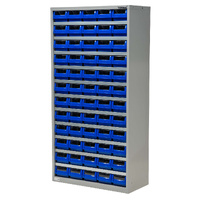








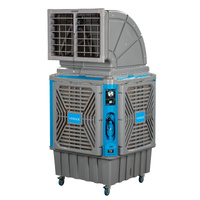
















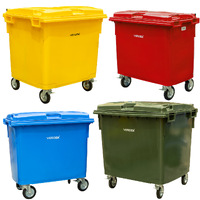







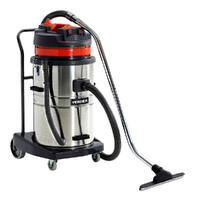





 Trolleys & Hand Trucks
Trolleys & Hand Trucks Cage Trolleys
Cage Trolleys Cleaning Carts & Trolleys
Cleaning Carts & Trolleys Construction Trolleys
Construction Trolleys Custom Trolleys
Custom Trolleys Hand Trucks & Dollies
Hand Trucks & Dollies Laundry/Linen Trolleys
Laundry/Linen Trolleys Lifting Trolleys
Lifting Trolleys Order Picking Trolleys
Order Picking Trolleys Panel Cart Trolleys
Panel Cart Trolleys Platform Trolleys
Platform Trolleys Powered Trolleys
Powered Trolleys Shelf & Tiered Trolleys
Shelf & Tiered Trolleys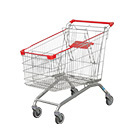 Shopping Trolleys
Shopping Trolleys Stainless Steel Trolleys
Stainless Steel Trolleys Tool Trolleys
Tool Trolleys Utility & Service Carts
Utility & Service Carts Lifting & Handling Equipment
Lifting & Handling Equipment Forklift Attachments
Forklift Attachments Jib Attachments
Jib Attachments Lifting Hoists & Pallet Hooks
Lifting Hoists & Pallet Hooks Load Skates & Tow Tugs
Load Skates & Tow Tugs Manual Stackers & Lifters
Manual Stackers & Lifters Pallet Jacks
Pallet Jacks Pallet Lifters
Pallet Lifters Pallet Rotators & Dispenser
Pallet Rotators & Dispenser Powered Pallet Trucks & Electric Lifters
Powered Pallet Trucks & Electric Lifters Scissor Lift Trolleys and Tables
Scissor Lift Trolleys and Tables Conveyor Equipment
Conveyor Equipment Conveyor Frames & Stands
Conveyor Frames & Stands Roller & Skate Conveyors
Roller & Skate Conveyors Ladders & Access Equipment
Ladders & Access Equipment Container & Yard Ramps
Container & Yard Ramps Ladders & Step Stools
Ladders & Step Stools Work Platforms & Crane Cages
Work Platforms & Crane Cages Drum Handling Equipment
Drum Handling Equipment Drum Storage & Bunding
Drum Storage & Bunding Drum Trolleys & Lifters
Drum Trolleys & Lifters Forklift Drum Handling
Forklift Drum Handling Waste Handling & Bins
Waste Handling & Bins Bin Lifters & Tippers
Bin Lifters & Tippers Plastic Waste & Wheelie Bins
Plastic Waste & Wheelie Bins Steel Waste & Tipping Bins
Steel Waste & Tipping Bins Waste Carts
Waste Carts Dangerous Goods Storage & Spillage
Dangerous Goods Storage & Spillage Aerosol Cans Storage Cages
Aerosol Cans Storage Cages Bunded Pallets & Storage
Bunded Pallets & Storage Corrosive Goods Storage Cabinets
Corrosive Goods Storage Cabinets DG Storage & Trolleys
DG Storage & Trolleys Flammable Liquid Cabinets
Flammable Liquid Cabinets Forklift Gas Storage Cages
Forklift Gas Storage Cages Site Storage
Site Storage Spill Kits
Spill Kits Shelving & Storage Equipment
Shelving & Storage Equipment Stillage & Transport Cages
Stillage & Transport Cages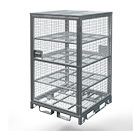 750 Series Cage Configurations
750 Series Cage Configurations Heavy Duty Cabinets
Heavy Duty Cabinets Heavy Duty Shelving
Heavy Duty Shelving Mega Bins & Pallets
Mega Bins & Pallets Packing & Workbenches
Packing & Workbenches Parts Trays & Stor-Pak Bins
Parts Trays & Stor-Pak Bins Pegboard & Louvre Panels
Pegboard & Louvre Panels Plastic Bins & Crates
Plastic Bins & Crates Plastic Handling Solutions Bins
Plastic Handling Solutions Bins Plastic Pallets
Plastic Pallets Stack & Nest Bins
Stack & Nest Bins Pallet Racking Accessories
Pallet Racking Accessories Workplace Equipment
Workplace Equipment Modular Workbenches
Modular Workbenches Electric Height-Adjustable Workbenches
Electric Height-Adjustable Workbenches Floor Matting
Floor Matting General Workplace Equipment
General Workplace Equipment Industrial Weighing Scales
Industrial Weighing Scales Packaging Machinery
Packaging Machinery Stationery Cupboards
Stationery Cupboards Storage and Stillage Cages
Storage and Stillage Cages Tool Trolleys
Tool Trolleys Tooling Cabinets
Tooling Cabinets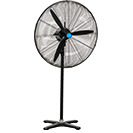 Workshop Fans and Coolers
Workshop Fans and Coolers Safety Barriers, PPE & Signage
Safety Barriers, PPE & Signage Barriers & Bollards
Barriers & Bollards First Aid Equipment
First Aid Equipment Gloves, Knives and PPE
Gloves, Knives and PPE Signage
Signage Cleaning & Site Supplies
Cleaning & Site Supplies Cleaning Equipment
Cleaning Equipment Cleaning Trolleys
Cleaning Trolleys Rubbish Bins
Rubbish Bins Signs & Traffic Supplies
Signs & Traffic Supplies Construction Equipment
Construction Equipment Construction Trolleys
Construction Trolleys Waste Handling
Waste Handling General Site Equipment
General Site Equipment Concrete Equipment
Concrete Equipment Site Storage
Site Storage Lifting Equipment
Lifting Equipment Verdex Specials
Verdex Specials










